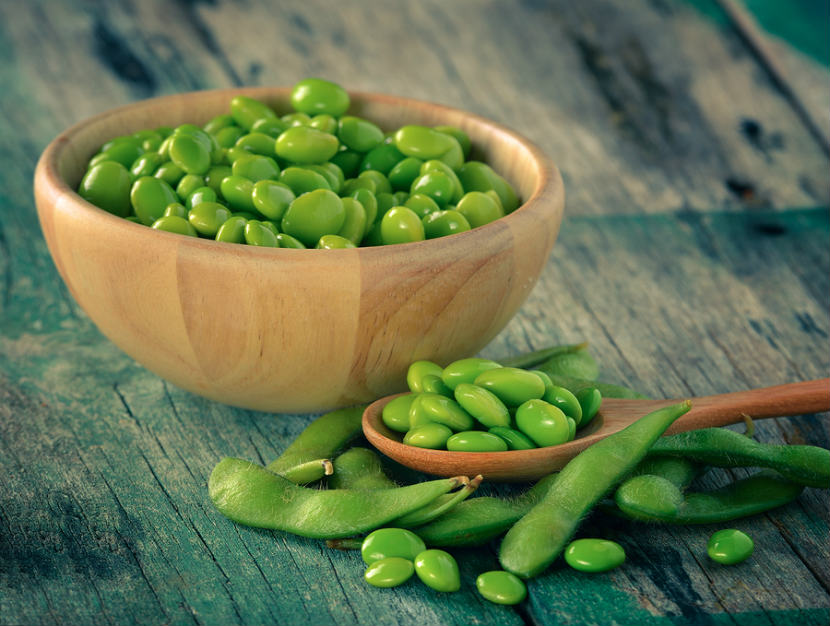
Did you know that soy is one of the most common food allergens in Canada? For people who are allergic, avoiding soy and soy-containing foods while still making healthy food choices is important. Read on to get the facts on soy allergies.
What is a soy allergy?
A soy allergy is when the body’s immune system mistakes soy as harmful. For some, soy can trigger life-threatening reactions. Soy is part of the legume family. All beans, peas, lentils and peanuts are legumes. Most people who have a soy allergy do not have an allergy to other legumes.
What are the symptoms of a food allergy?
Like other food allergies, having an allergic reaction to soy can include any of the following symptoms:
-
Flushed face, hives or a rash, red and itchy skin
-
Swelling of the eyes, face, lips, throat and tongue
-
Trouble breathing, speaking or swallowing
-
Itchy skin
-
Anxiety, distress, fainting, paleness, sense of doom and weakness
-
Cramps, diarrhea, vomiting
-
A drop in blood pressure, rapid heartbeat and loss of consciousness (in extreme cases)
It is important to avoid all foods that contain soy and soy-based ingredients if you are allergic.
When is a soy allergy usually diagnosed?
A soy allergy is most common in infants. Look out for skin rashes, hives or any face swelling as a symptom of a soy allergy in infants. A doctor can confirm if you suspect your infant has a soy allergy.
What do I do if my baby has a soy allergy?
If your baby has been diagnosed with a soy allergy, it is important to avoid feeding your baby any foods that contain soy. If you are breastfeeding your baby, check with your baby’s doctor to see if removing soy and foods that contain soy from your diet is needed. Soy proteins in a mother’s diet can pass into her breastmilk and cause an allergic reaction in her baby. If you are formula feeding your infant, consider an extensively hydrolyzed infant formula. These formulas have proteins that are broken down so that they do not cause an allergic reaction. Extensively hydrolyzed infant formulas are used when a baby is allergic to cow’s milk-based formula and/or soy-based formula. They also tend to be more expensive than other types of formula. Check with your baby’s doctor to be sure what formula is best for your baby. Learn more about the types of formula here.
Can a soy allergy be outgrown?
Yes. For most children, a soy allergy will go away within a few years. Severe soy allergies can last a lifetime. It is important to consult with your doctor or allergist before reintroducing soy products into your child’s diet.
What foods may contain soy?
Foods and beverages that often contain soy include:
-
Bean sprouts
-
Bread crumbs, cereals and crackers
-
Breaded food
-
Imitation dairy food
-
Sauces like tamari, teriyaki and Worcestershire
-
Simulated fish and meat products like surimi, imitation bacon bits and vegetarian burgers
-
Soy beverages
-
Soybean and soybean paste
-
Soy sauce
-
Tempeh and tofu
Food products that possibly use soy include:
-
Bread
-
Breakfast cereals including infant pablum
-
Infant formulas
-
Pastas
Soy is a versatile ingredient used in many processed foods. Other possible sources of soy include:
-
Baked goods and baking mixes
-
Cooking spray margarine, vegetable shortening and vegetable oil
-
Dressings, gravies and marinades as well as spreads and dips
-
Food additives like thickening agents, monodiglycerides and monosodium glutamate (MSG)
-
Meat products with fillers, like hamburger patties and hotdogs
-
Seasoning and spices
-
Soups, broths, soup mixes and stocks
What are the other names for soy?
Look at the product’s ingredient list for these other names for soy:
-
Bean curd (dofu, kori-dofu, soybean curds, tofu)
-
Edamame
-
Kinako
-
Natto
-
Nimame
-
Okara
-
Soya, soja, soybean and soyabeans
-
Yuba
Stricter Canadian guidelines require that soy-containing products are clearly labelled. The ingredient list will say “contains: soy” if it contains this ingredient.
Is soy oil safe for a person with a soy allergy?
People who have a soy allergy may have a reaction to soy oil. Before trying soy oil or products made with soy oil, consult with your doctor or allergist.
Tips for following a soy-free diet
Keep these helpful tips in mind when following a soy-free diet:
-
Look for the words “contains: soy” on the ingredient list. All soy-containing foods are now clearly labelled.
-
Avoid food products that warn they “may contain” or “may contain traces” of soy on their label.
-
If you are unsure if a product contains soy, contact the manufacturer. Even if you have used the product before, it may have changed. Many food packages have contact information on them.
-
Don’t take chances. Avoid foods that do not have a clear ingredient list. This includes avoiding imported products, as they do not always have an accurate food label.
-
Be informed. Sign up for the Canadian Food Inspection Agency’s (CFIA) free email “Food Recalls and Allergy Alerts” notification service.
-
When eating out, ask if soy or soy-based foods are used. If you can, call ahead to see if soy-free dishes are available.
Bottom line
If you aren’t sure if a product contains soy, don’t take any chances. Carefully reading the ingredient list of food products every time is important to avoid an allergic reaction.
Last Update – April 26, 2018